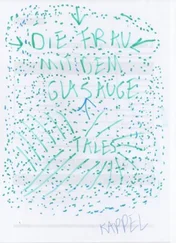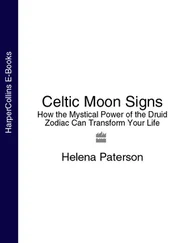Jodorowsky, Alejandro - Psychomagic - The Transformative Power of Shamanic Psychotherapy
Здесь есть возможность читать онлайн «Jodorowsky, Alejandro - Psychomagic - The Transformative Power of Shamanic Psychotherapy» весь текст электронной книги совершенно бесплатно (целиком полную версию без сокращений). В некоторых случаях можно слушать аудио, скачать через торрент в формате fb2 и присутствует краткое содержание. Год выпуска: 2010, Издательство: Inner Traditions Bear & Company, Жанр: Старинная литература, на английском языке. Описание произведения, (предисловие) а так же отзывы посетителей доступны на портале библиотеки ЛибКат.
- Название:Psychomagic: The Transformative Power of Shamanic Psychotherapy
- Автор:
- Издательство:Inner Traditions Bear & Company
- Жанр:
- Год:2010
- ISBN:нет данных
- Рейтинг книги:4 / 5. Голосов: 1
-
Избранное:Добавить в избранное
- Отзывы:
-
Ваша оценка:
- 80
- 1
- 2
- 3
- 4
- 5
Psychomagic: The Transformative Power of Shamanic Psychotherapy: краткое содержание, описание и аннотация
Предлагаем к чтению аннотацию, описание, краткое содержание или предисловие (зависит от того, что написал сам автор книги «Psychomagic: The Transformative Power of Shamanic Psychotherapy»). Если вы не нашли необходимую информацию о книге — напишите в комментариях, мы постараемся отыскать её.
Psychomagic: The Transformative Power of Shamanic Psychotherapy — читать онлайн бесплатно полную книгу (весь текст) целиком
Ниже представлен текст книги, разбитый по страницам. Система сохранения места последней прочитанной страницы, позволяет с удобством читать онлайн бесплатно книгу «Psychomagic: The Transformative Power of Shamanic Psychotherapy», без необходимости каждый раз заново искать на чём Вы остановились. Поставьте закладку, и сможете в любой момент перейти на страницу, на которой закончили чтение.
Интервал:
Закладка:
It could be that a person had faith but did not desire to recover their health. I remember, for example, a woman named Henriette, the patient of a doctor friend of ours, who was told she had no more than two years to live. Henriette was sick with cancer, and they had already removed her breasts. At the request of her doctor, who supported trying anything, she traveled with me to Mexico. Although very depressed, she agreed to an operation by Pachita, who suggested purifying her blood by injecting two liters of plasma that arrived from another dimension, made by El Hermanito. The day arrived and, after the usual ceremony, Henriette found herself lying on the bed. El Hermanito stuck a knife in her arm, and we heard the blood fall into a metal bucket. It was a thick, stinking stream. Then El Hermanito introduced into the wound the end of a meter-long plastic tube, lifting the other end into the air to connect it to the invisible. We could hear the sound of liquid pouring smoothly from an unknown place, while El Hermanito said, “Receive the holy plasma, little daughter, do not reject it.” The day after the operation, not believing in the effects of the “transfusion,” Henriette was sad and listless. I tried to get her to respond, but it was impossible. She was smug like a kid, gruff, egotistical. She accused me of wanting to take her to Calvary. Two days later, a huge infected abscess appeared on her arm. Very afraid, I called Enrique, Pachita’s son, who, after consulting his mother, told me, “Your friend has faith in medicine, but she rejects it. She wants to undo the holy plasma. So tonight have her do her business in a bedpan, and tomorrow morning apply the excrement to her arm to explode the seat of the infection.” I gave the message to Henriette, who closed herself in her room. I do not know if she followed the advice or not, but the truth is that the abscess exploded leaving a very large scar, so deep the bone was visible. Immediately I took her back to Pachita who, converted into El Hermanito, said to the patient in a man’s voice, “I was waiting for you, daughter. I am going to give you what you desire. Come . . .” The healer took her by the hand like a little girl and brought her to the bed and surprisingly started humming an old French song, while swinging a knife before the open eyes of the patient. I had the impression that she was hypnotizing her. So she asked her, “Why did you want them to cut off your breasts?” To which Henriette answered, in a child’s voice, “To not be a mother.”
“And now, my dear girl, what do you want them to cut?”
“The glands that swell in my neck.”
“Why?”
“To not have to speak to people.”
“And then, little daughter?”
“For them to cut the glands that swell under my arm.”
“Why?” “To not have to work.”
“And then?”
“That they cut those that swell near my sex, so I can be alone with myself.”
“And then?”
“The glands in my legs, so that they cannot force me to go
anywhere.”
“And then what do you want?”
“To die . . .”
“Very well, my little daughter, now you know the path your illness will take. Choose: follow this path or heal yourself.”
Pachita put a dressing on her arm, and three days later the wound had healed. Henriette decided to go back to Paris, and she died two weeks later. When I told Pachita the sad news, she replied, “ El Hermanito does not come only to heal. He also helps those who desire it, to die. Cancer and other grave illnesses present themselves like warriors, following a plan of precise conquest. When you show an ill patient, who seeks to wipe himself out, the path the illness takes, he will hurry to follow it. For this reason, the French woman, instead of spending two years suffering, quit fighting. She yielded to the illness and helped it realize its plan in two weeks.” Before this I had believed that it was enough to make someone conscious of self-destructive impulses in order to save them. From this case, I learned the lesson that such knowledge could also accelerate the person’s death.
Valérie’s testimony is indeed really interesting in that it concerns the relationship between healing and faith, as well as the importance of the desire to live. For your part, what do you think, Alejandro? To heal, is faith necessary?
Not necessarily. Everything Valérie recounts is rigorously exact, but one cannot draw a generalization from it. Without a doubt, it would be preferable to have faith, but this is not a requirement. Moreover, Pachita appears to know exactly how to shake the skeptics who come to her, as she did by putting the symbol of my film in her hand. One day, I brought her the French stuntman Jean-Pierre Vignau. He was a giant karate champion who did not believe in these things and did not intend to be tricked by an old Mexican woman. He had hurt his leg, and I urged him to go with my wife to Pachita’s house. He was very hesitant, but as I accused him of being afraid, he finally consented while swearing he would not be duped.
And what was the result of this confrontation between the old sorceress and this stuntman no one messes with?
It happens that Vignau himself, very touched by the episode, tells of it in Corps d’acier, his memoirs published through éditions Robert Laffont in 1984. So I am going to read the related passage. This testimony of a skeptic cannot but add weight to what I have already told you about Pachita:
During that visit to Mexico, to the home of Alejandro, I was to meet the strangest person I had ever met. The strangest and the truest of beings. I had lived with a muscle tear in my thigh for months. Not a little tear either. A huge thing like two closed fists with a hole in the middle. I had searched for weeks in Paris, going from quack doctor to specialist, trying to find someone who could repair this. No luck. They advised me simply to completely quit karate because it was irreparable. One evening, Jodorowsky asked his wife Valérie if she would take me to see Pachita, an old-style Mexican healer. Here, one would call her a sorceress. And like that, one early morning, I left for Pachita’s house with Valérie carrying a raw egg in her hand, something that had to do with the treatment.
We come to a narrow little lane. A big, wooden carriage entrance. Valérie knocks. The door half opens on an old chap to whom Valérie explains the nature of our visit. He lets us in. The courtyard is full of people. Men, women, children, from all social classes but mostly the poor, Indians, mestizos, very typical Mexicans with baskets, snacks, babies strapped to their backs—all that, that discussion, that debate, endless talking. At the heart of the courtyard, on a heap of wood, a little eagle stares at it all with his sharply serene eye.
We wait. After about twenty minutes, a door opens to the house at the end of the courtyard. A little old woman comes out, an old lady. She looks like a lot of the women in the courtyard. Except that she is very small, fat, round, with a white eye, which seems to see better than the other one: to see what the good one can’t see anymore. Impossible to guess her age. She could be one hundred or fifty. She is there, in the courtyard; she looks at everyone and chooses a chap, extending a hand to him.
“You . . .” The guy gets up and follows her into the house. A long moment later, he comes out. She again looks about the people gathered there, and she points her finger at me. “You . . .” It is me. I realize that I’m adopting a mental attitude of openness in front of this strange person. I tell myself, “I do not know anyone or anything. So, I open myself. Anyway, she cannot damage my leg anymore than it already is.”
Читать дальшеИнтервал:
Закладка:
Похожие книги на «Psychomagic: The Transformative Power of Shamanic Psychotherapy»
Представляем Вашему вниманию похожие книги на «Psychomagic: The Transformative Power of Shamanic Psychotherapy» списком для выбора. Мы отобрали схожую по названию и смыслу литературу в надежде предоставить читателям больше вариантов отыскать новые, интересные, ещё непрочитанные произведения.
Обсуждение, отзывы о книге «Psychomagic: The Transformative Power of Shamanic Psychotherapy» и просто собственные мнения читателей. Оставьте ваши комментарии, напишите, что Вы думаете о произведении, его смысле или главных героях. Укажите что конкретно понравилось, а что нет, и почему Вы так считаете.












